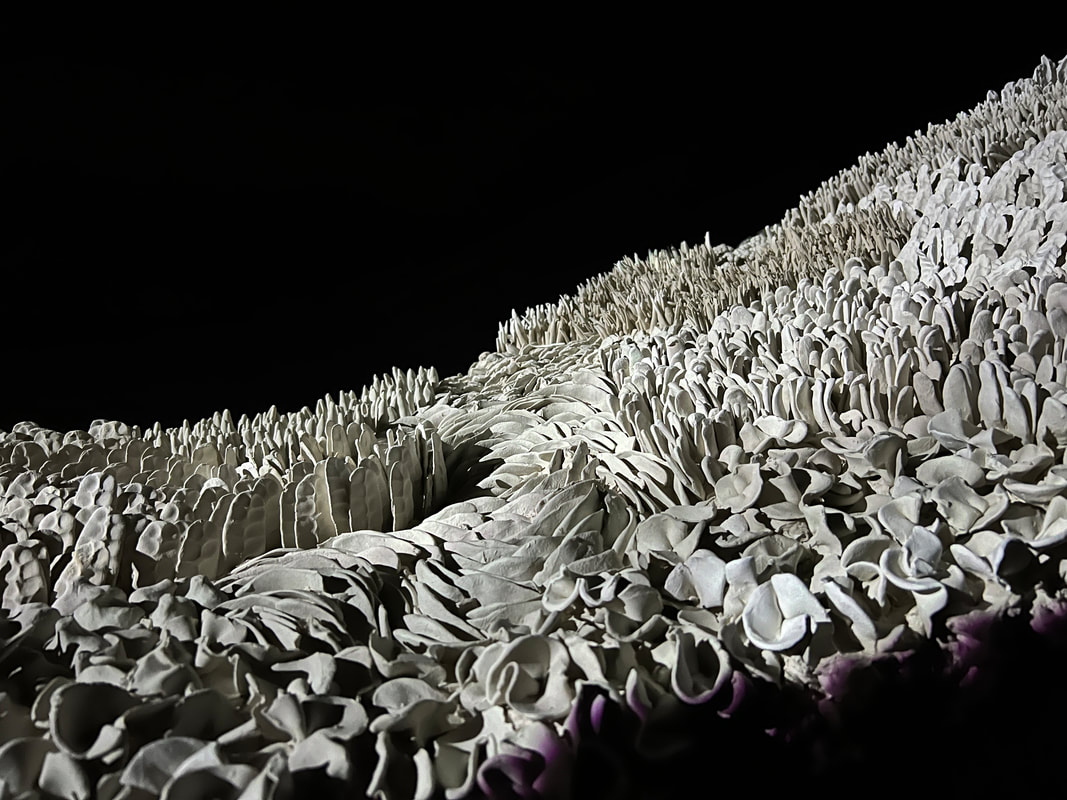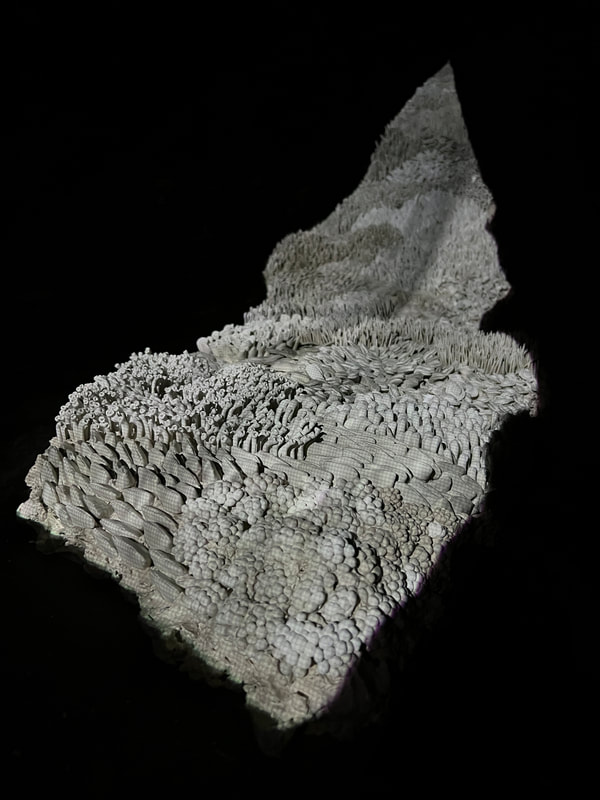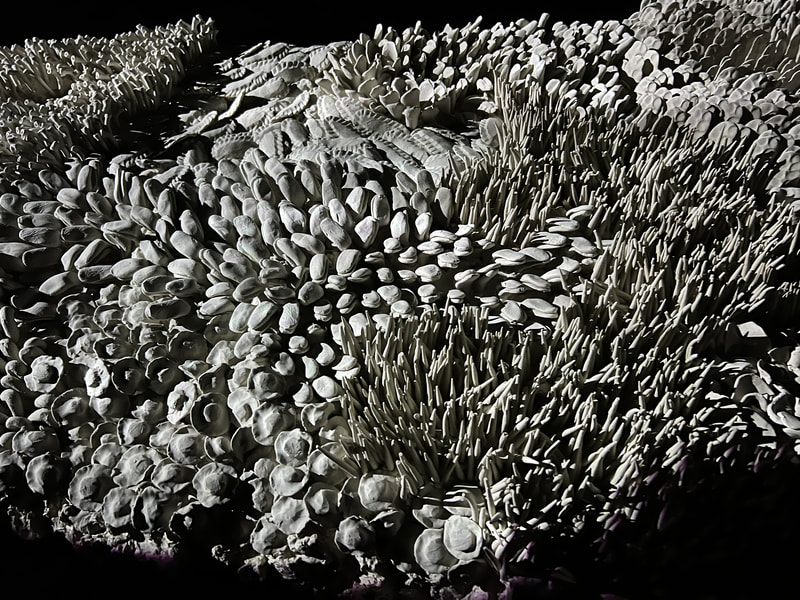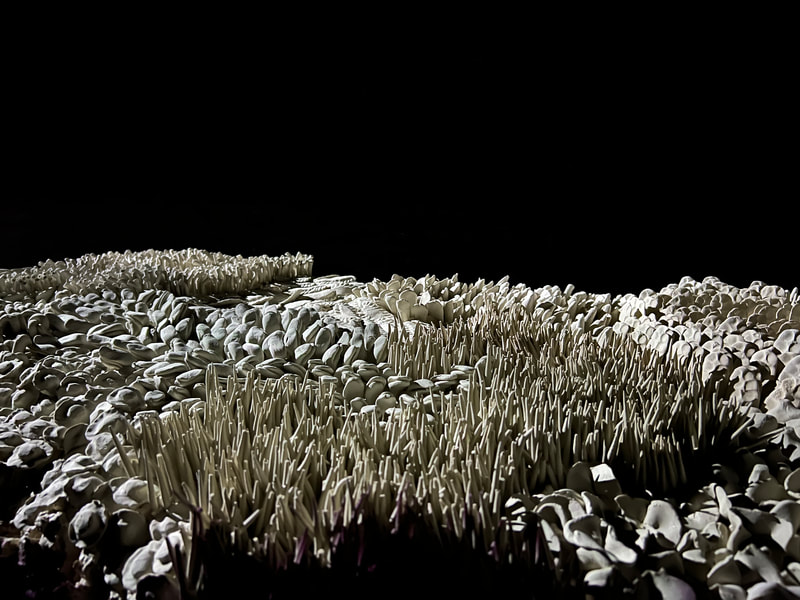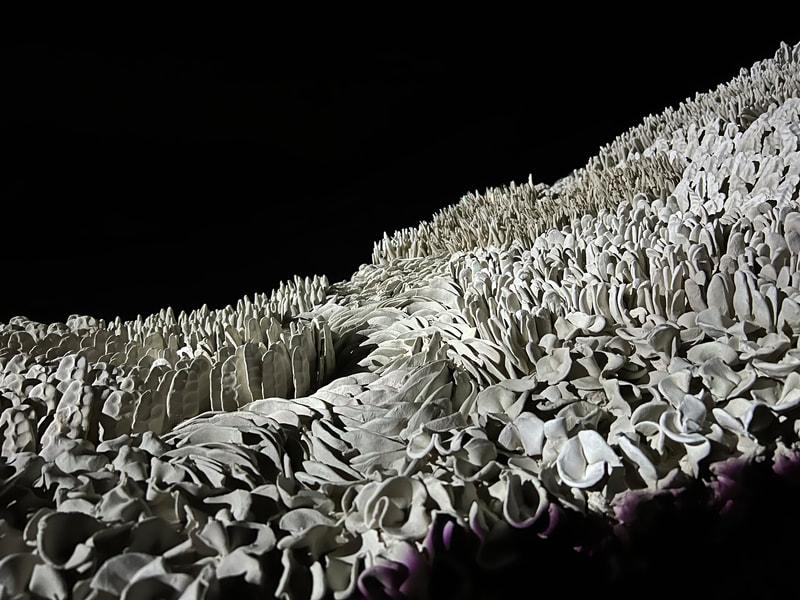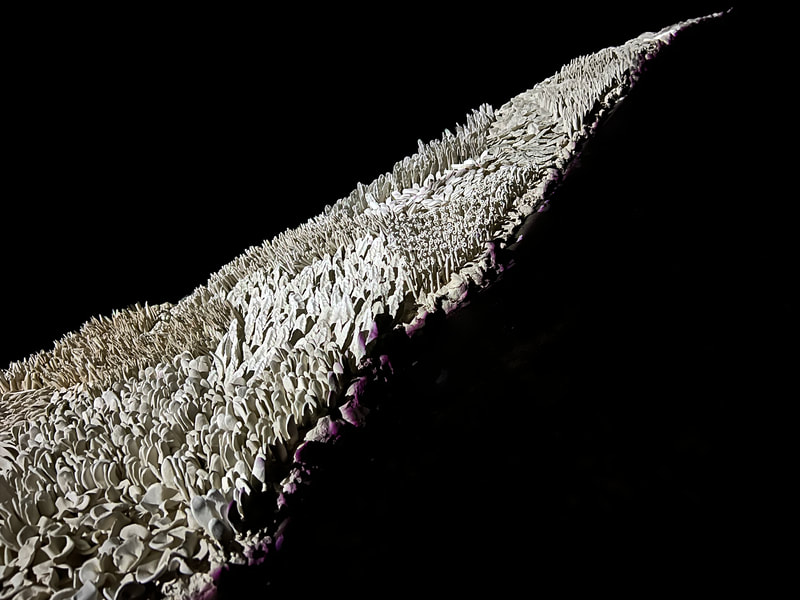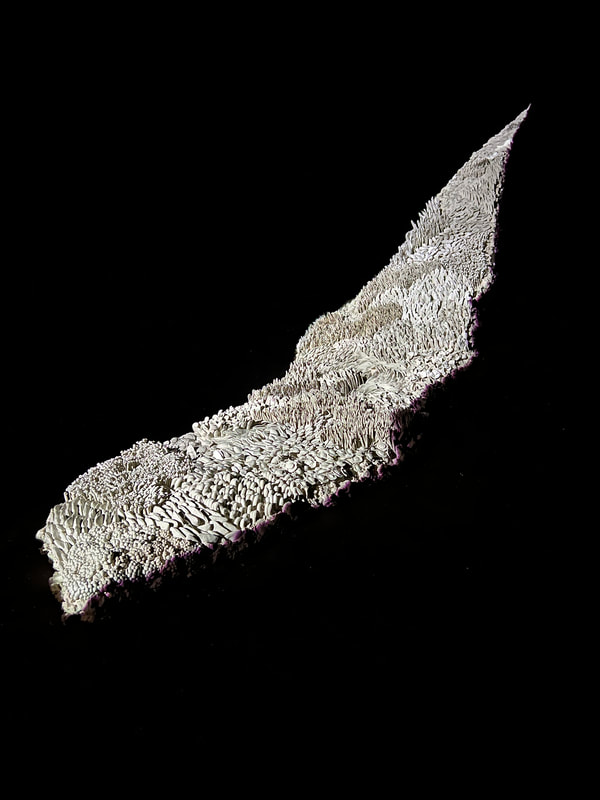Unearth, 2023, 121 x 32 x 4 in., unfired clay, video projection, sound
Chute Space, Atlanta Contemporary
Curated by Erika Diamond
https://atlantacontemporary.org/exhibitions/rachel-eng
Unearth is an installation built on site in the former coal chute for the building and considers land use, climate change, and their connection memory. Coal formed over millions of years through a complex geological process. It originated from plant material that accumulated in swampy environments during the Carboniferous period, around 360 to 300 million years ago. As plants in these wetlands died, their remains fell into the stagnant water, where they couldn’t fully decompose due to the lack of oxygen. Over time, layers of sediment covered the decaying plant matter, creating pressure and preventing complete decomposition. White rot fungi, despite their remarkable ability to decompose a wide range of organic materials due to their unique enzymatic systems, are generally unable to break down coal effectively. White rot fungi, are one of the only microorganisms that can break down lignin (a compound found in woody plants), which evolved at the end of the Carboniferous period (1). The forms in this exhibition will reference this synchronicity in being inspired by both fungi and plant organisms that existed millions of years ago. What can we learn from the tremendous age of this planet and the previous rhythms and cycles that it has gone through before humans?
The shape of this piece was inspired by the Weelaunee Forest (ancestral lands to the Muscogee Peoples) which is one of Atlanta’s largest green spaces and is an important piece of climate infrastructure that cools surface temperatures, cleans the air, and prevents flooding. For the past two years the South River Forest has been in jeopardy from a proposed “Cop City” ($90 million, 85 acre, police training facility). This project would destroy parts of the forest and disproportionately impact a majority black neighborhood, furthering the impacts of environmental racism and militarized police force.
Chute Space, Atlanta Contemporary
Curated by Erika Diamond
https://atlantacontemporary.org/exhibitions/rachel-eng
Unearth is an installation built on site in the former coal chute for the building and considers land use, climate change, and their connection memory. Coal formed over millions of years through a complex geological process. It originated from plant material that accumulated in swampy environments during the Carboniferous period, around 360 to 300 million years ago. As plants in these wetlands died, their remains fell into the stagnant water, where they couldn’t fully decompose due to the lack of oxygen. Over time, layers of sediment covered the decaying plant matter, creating pressure and preventing complete decomposition. White rot fungi, despite their remarkable ability to decompose a wide range of organic materials due to their unique enzymatic systems, are generally unable to break down coal effectively. White rot fungi, are one of the only microorganisms that can break down lignin (a compound found in woody plants), which evolved at the end of the Carboniferous period (1). The forms in this exhibition will reference this synchronicity in being inspired by both fungi and plant organisms that existed millions of years ago. What can we learn from the tremendous age of this planet and the previous rhythms and cycles that it has gone through before humans?
The shape of this piece was inspired by the Weelaunee Forest (ancestral lands to the Muscogee Peoples) which is one of Atlanta’s largest green spaces and is an important piece of climate infrastructure that cools surface temperatures, cleans the air, and prevents flooding. For the past two years the South River Forest has been in jeopardy from a proposed “Cop City” ($90 million, 85 acre, police training facility). This project would destroy parts of the forest and disproportionately impact a majority black neighborhood, furthering the impacts of environmental racism and militarized police force.

